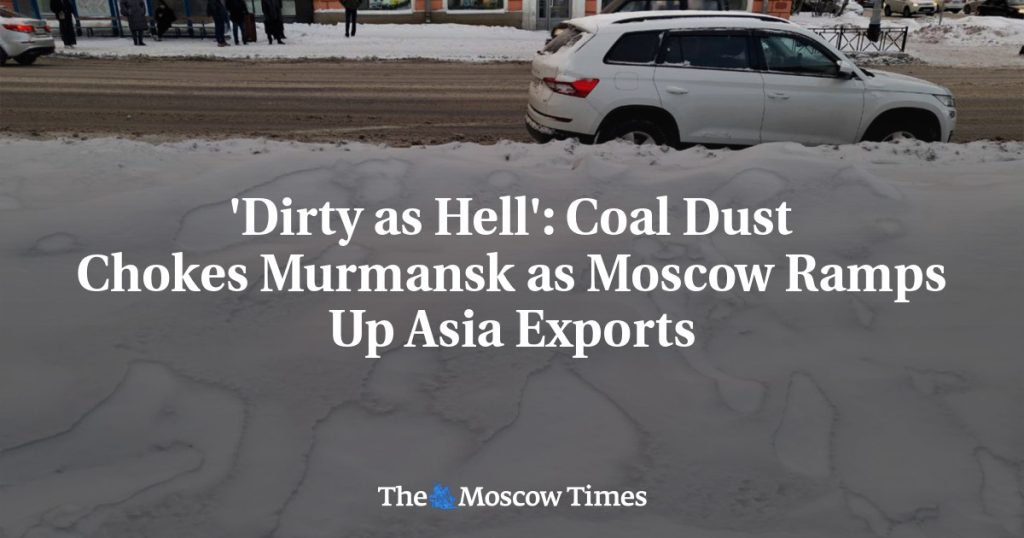Murmansk, a city located near the shores of the Barents Sea in Russia’s far northwest, is known as the world’s largest city beyond the Arctic Circle and a popular destination for tourists hoping to witness the Northern Lights. However, the city is facing a significant issue with coal dust pollution. The Murmansk Commercial Seaport carries out coal transshipment out in the open, sending coal dust into the air in a radius of several kilometers. This pollution is not only impacting the appearance of the city but also raising concerns about its effects on public health. Recent complaints about coal dust pollution have surged, prompting calls for investigations and improvements in dust control measures.
The effects of coal dust pollution are becoming increasingly visible in Murmansk, with residents and tourists alike noticing the presence of coal dust on iconic landmarks in the city. The port’s expanding activity, as Russia shifts its coal exports from Europe to Asia under wartime sanctions, has led to an increase in coal shipments and subsequent coal dust pollution. Workers in coal terminals are exposed to high concentrations of dust, which can have adverse health effects. Studies have shown that coal dust contains hazardous heavy metals that can lead to lung diseases such as anthracosis.
Efforts are being made to address the coal dust pollution in Murmansk, with the port management acknowledging the need to enhance dust control measures. Measures such as suspending the intake of dusty cargo and working with freight owners to technologically change loading places are being implemented to reduce coal dust emissions. However, it remains unclear if these measures will be effective in alleviating the problem, given that coal has been the main business of the Murmansk seaport for years. Activists argue that enclosed coal handling facilities are the only viable solution to prevent coal dust pollution and protect the health of workers and residents.
Despite the challenges posed by coal dust pollution and the transition of Russia’s coal exports from Europe to Asia, the Murmansk trade port is expanding its operations. The port has seen an increase in cargo shipments, as well as loaded large coal vessels destined for Asia. This expansion offers a glimpse into the state of the Russian coal industry amid the ongoing conflict in Ukraine. Russia’s coal exports have remained stable, with a pivot towards Asian markets, despite facing logistical hurdles and difficulties in striking deals with foreign partners due to sanctions.
As the Russian coal industry continues to focus on Asian markets to maintain stable demand for coal, experts predict looming challenges in the industry’s future. Falling coal prices, rising logistics costs, and the potential impact of environmental regulations in Asian countries could pose significant challenges for the industry in the long term. Russian officials and major firms are aware of the global energy transition’s implications for coal demand but have been slow to embrace the transition themselves. Despite the uncertain future outlook, the Russian coal industry remains afloat for now, prompting questions about the effectiveness of sanctions on Russian coal in achieving their intended goals.


